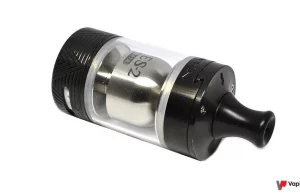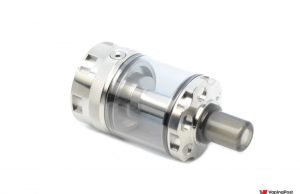A few years ago, this wasn’t even on our radar: all atomizers and clearomizers on the market were designed for indirect inhalation, and mods did not exceed 15 W maximum power. As available power has increased, air flows have opened up, and direct inhalation has allowed a plethora of different vaping options. However, indirect inhalation continues to mean just that.
To give new vapers the best chance of quitting smoked tobacco, we need to consider their history as a smoker. The way a smoker inhales cigarette smoke, pulling with the mouth and then inhaling the smoke, is an aspect of vaping that causes a lot of apprehension. Indirect inhalation is possible with many reduced air flow atomizers. Explanations.
Is indirect vaping a left field?
Big clouds, direct inhalation vaping and high power are all over social media and manufacturers’ marketing. Even so, many vapers still prefer MTL and it makes up the largest market share. One reason for this is that it often eases the transition to electronic cigarettes, but we mustn’t forget what great pleasure it still gives us, even after years of vaping!
- What is indirect inhalation?
- What’s special about MTL atomizers?
- Dedicated or multi-purpose?
- What assemblies are there for MTL?
- How much nicotine do you get with MTL?
Indirect inhalation, or MTL, means mouth-to-lung, literally “from your mouth to your lungs” and describes a two-step vaping method. First you draw the vapour into your mouth, and then you breathe it into your lungs. Of course, this is a lot like to the way most smokers use their tobacco cigarettes.
It’s different from direct inhalation, where vapour is drawn directly into the lungs, by breathing it in like air. This is what hookah (shisha) smokers usually do.
Atomizers designed for indirect inhalation are designed for a vape with limited power and a restrictive air flow. In a nutshell, atomizers designed for direct inhalation are bigger than all other vaping kit.
Air flow is definitely the most important factor, because in this case the air passes through small openings not big holes. Inhaling takes more effort, which is essential in MTL. The chamber’s smaller too, and the posts are made to take thinner wires for assemblies that work at 8 and 20 W.
Some atomizers are marketed as being able to switch from MTL to a very airy vape. It’s possible of course, since all you need is an adjustable air flow control that goes from very restrictive to very airy. It’s easy enough, but doing it well has been practically impossible until now.
In practice, these versatile atomizers don’t manage any one thing very well, because they all have some pros and cons. Plus, the greater the vaping range they offer, the lower their overall vaping quality is. Some reasonably priced models do pretty well, but you’ll always get the best results from atomizers designed for a specific vaping style.
Indirect inhalation usually uses powers under 25W, normally between 12 and 18 W. That means assemblies use relatively thin wires, such as 28 or 30 Ga. Five windings around a 3 mm pin is a good starting point, and you can tweak it to suit your personal preferences of course.
Other, more complex wire designs like claptons also work well with MTL. The 28-40, with a 0.28mm core and 0.40mm coating, gives great flavour above 15 W. MTL assemblies are less exotic than some of the coils designed to make big clouds, but that doesn’t stop them aiming high.
We often read that you need to increase your nicotine level when you switch from direct inhalation to MTL. This is certainly true of pods and some clearomizers that give a small hit. But when it comes to reconstructables, you can control the assembly and therefore how effective it is. The hit is different because it doesn’t last as long when you inhale the vapour, but it can be as intense as inhaling directly with the same level of nicotine. It may actually be even stronger. Build your assembly to get the hit you want!


![Review: Kayfun Lite [plus] – SvoëMesto](https://www.vapingpost.com/wp-content/uploads/2021/11/kayfunlite-300x194.jpg)



